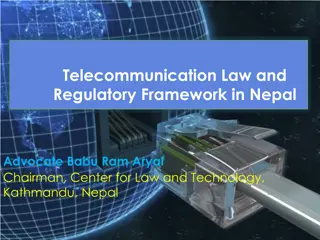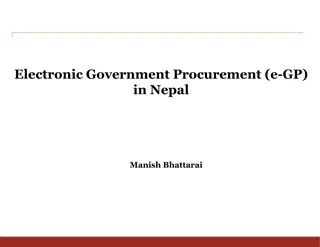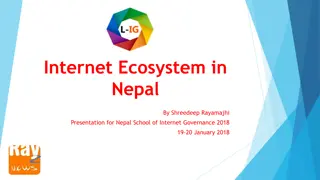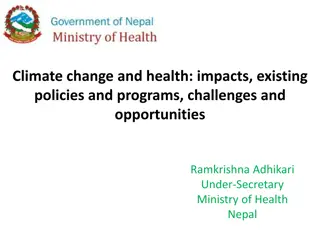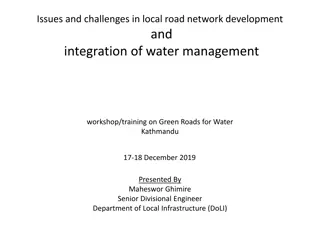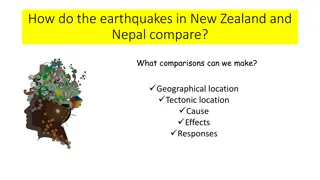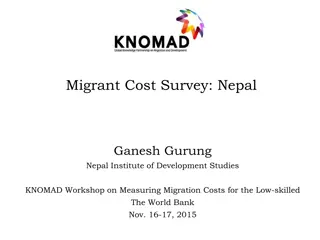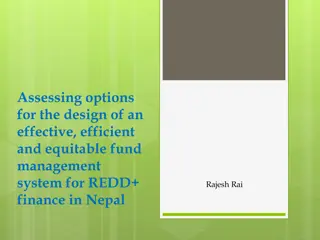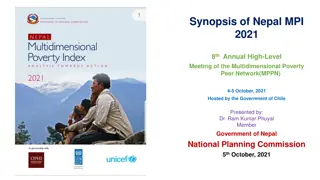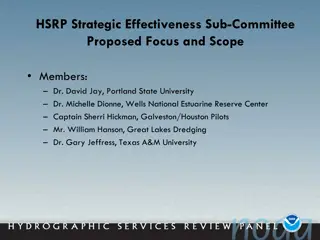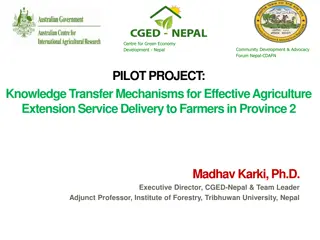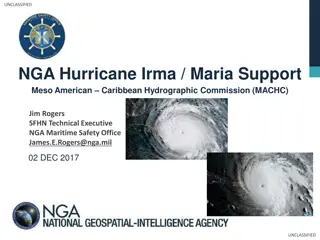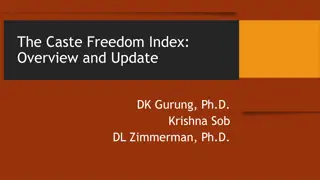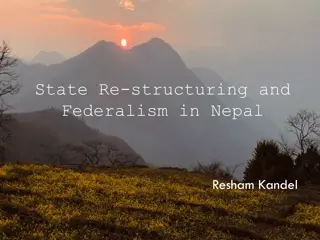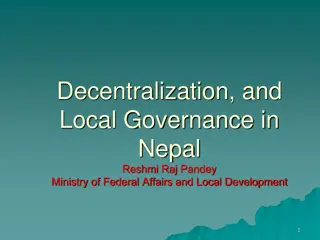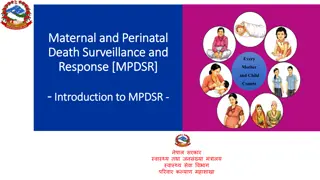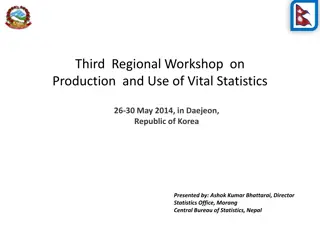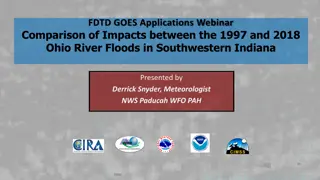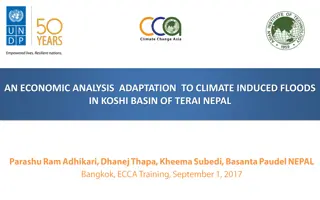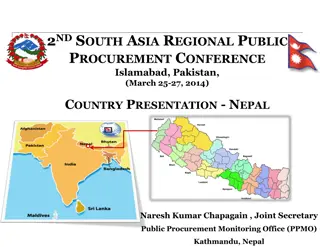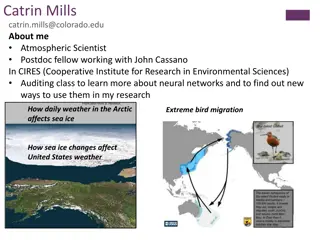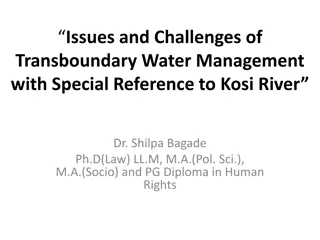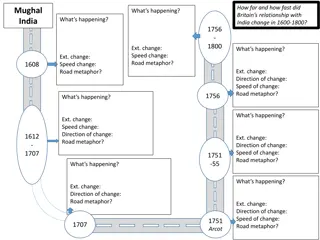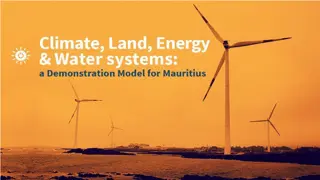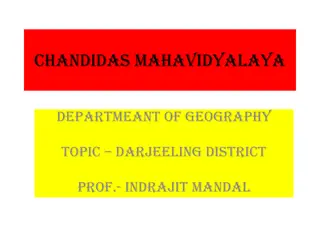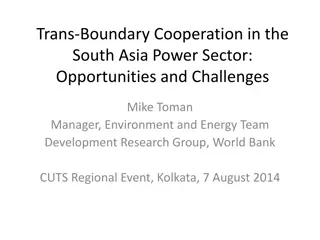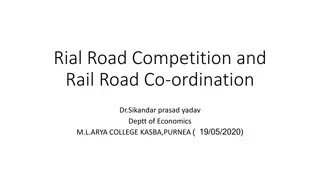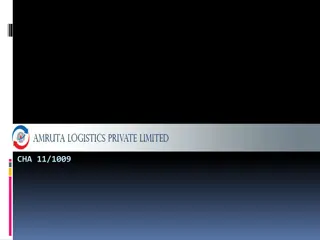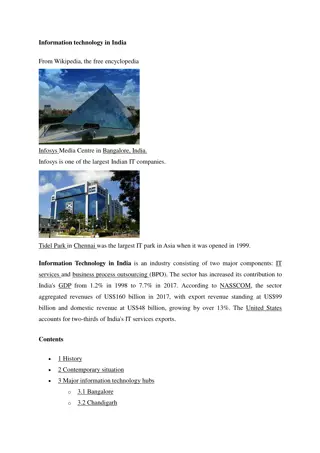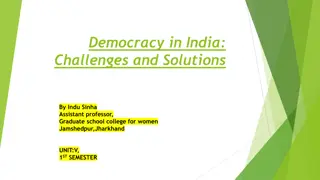Inundation Issues Between Nepal and India: Challenges and Solutions
Nepal and India face inundation problems due to river obstructions, leading to water-logging and land use issues. Various committees have been formed to address the challenges, but effectiveness has not met expectations. Major irritants such as embankments and infrastructure development near the border exacerbate the situation. Key problematic areas include the Mech Embankment, Koshi Project, and Karnali River.
Download Presentation

Please find below an Image/Link to download the presentation.
The content on the website is provided AS IS for your information and personal use only. It may not be sold, licensed, or shared on other websites without obtaining consent from the author. Download presentation by click this link. If you encounter any issues during the download, it is possible that the publisher has removed the file from their server.
E N D
Presentation Transcript
Nepal India and Inundation Problems Er. Shital Babu Regmee
Introduction Area: 147,181 square kilometer 900 km east- west and 200 km north-south Terai plain about 20% of the total area Rest is hills and mountains. The average annual precipitation:1600 mm less than 300 mm in the rain shadow around 5000mm in the wet region. total annual outflow: 225 billion cubic meters.
Background King of Nepal and Prime Minister of India, decided to form a Standing Committee in Inundation Problems between Nepal and India (SCIP) in the SAARC meeting at Dhaka in December, 1985. First meeting held in July 1986 in Kathmandu 33 concerns 29 by Nepal 4 by India
Background SCIP replaced by Nepal-India Joint Committee on Inundation and Flood Management (JCIFM) Existing Committees Ministerial level (Joint Ministerial Level Commission on Water Resources, JMCWR), Secretary Level (Joint Committee on Water Resources, JCWR), Joint Secretary Level (Joint Standing Technical Committee, JSTC), Department Chief Level, (Joint Committee on Inundation and Flood Management, JCIFM). Other committees and working groups like technical expert level High Level Technical Committee (HLTC) and field officers level committees formed as and when necessary. There are many committees between the two countries Meetings of the committees are not regular Effectiveness has not been up to the expectation.
Problems Due to the obstructions created, the natural course of the river is confined to a fixed waterway causing backwater effect that cause water- logging Swinging of rivers creates land use and entitlement problems in Nepal Nepal has no reservoirs to store flood water so whatever water comes through river as flood has to pass to India as it is generated
Problems Infrastructures like embankments, bridges, roads, irrigation systems, buildings etc are being constructed in a rapid pace in the territories near Nepal- India boarder All water flowing through Nepal has to pass through India so any obstruction has backwater effect
Major Irritants Mechi Embankment Koshi Project Gaur and vicinity Gandak Project Lumbini Area: Rasiawal Khurd-Lotun Kapilvastu Sagars Marthi, Siswa, Bajha and Mohali West Rapti Karnali River Mahakali River
Major Issues All Nepalese rivers drain to India High flood discharge and low dry season flow Reservoir construction Climate change Less information Unilateral infrastructures construction Mistrust
Major Issues Jacketing of rivers in India Country slopes are milder. There will be backwater flow in tributary drains. Flood may outflank bank and convert area to inundation and ponding. Poor maintenance system makes it unreliable. New area may get flooding. Centre state jurisdiction Slow implementation
International Concern UN Convention on the law of the Non- Navigational Use of Watercourses, 1997 All the rivers that drain to India from Nepal are a part of International Watercourse and Nepal and India are International Watercourse States Watercourse States are entitled in their respective territories to utilize an International Watercourse in an equitable and reasonable manner
International Concern Measures to prevent the causing of significant harm to other watercourse States No country is allowed to use its territory against other country Timely notification with all the relevant data and information about all use In cases where negotiation between the parties fail to reach any settlement they have the obligation of settling their difference by peaceful means * In case of flood control works done by India it is noticed by Nepal only after the construction is over and the subject became a fait accompli
Conclusion Major policy and legal dimensions 1. Nepal India relations 2. National laws and policy In case of flood control works done by India it is noticed by Nepal only after the construction is over and the subject became a fait accompli All flood water from Nepal has to be transferred to India Joint long term solution must be worked out
Conclusion Present practice of making embankment unilaterally in India or in Nepal will not solve the problem River Jacketing may be effective in Nepal but not in flat area of India Long term solutions may be water retention in reservoirs, joint flood mitigation and adaptation.


